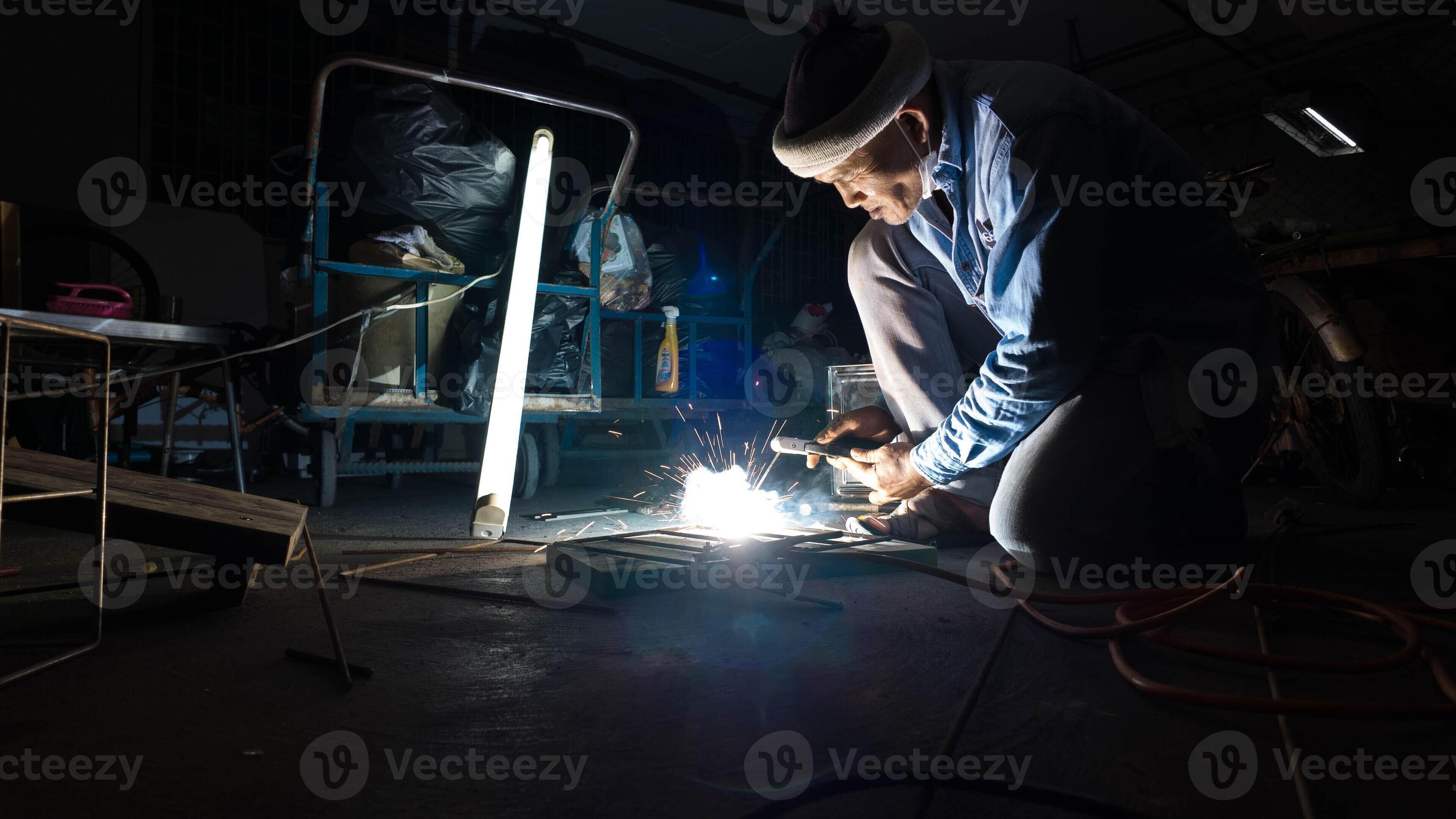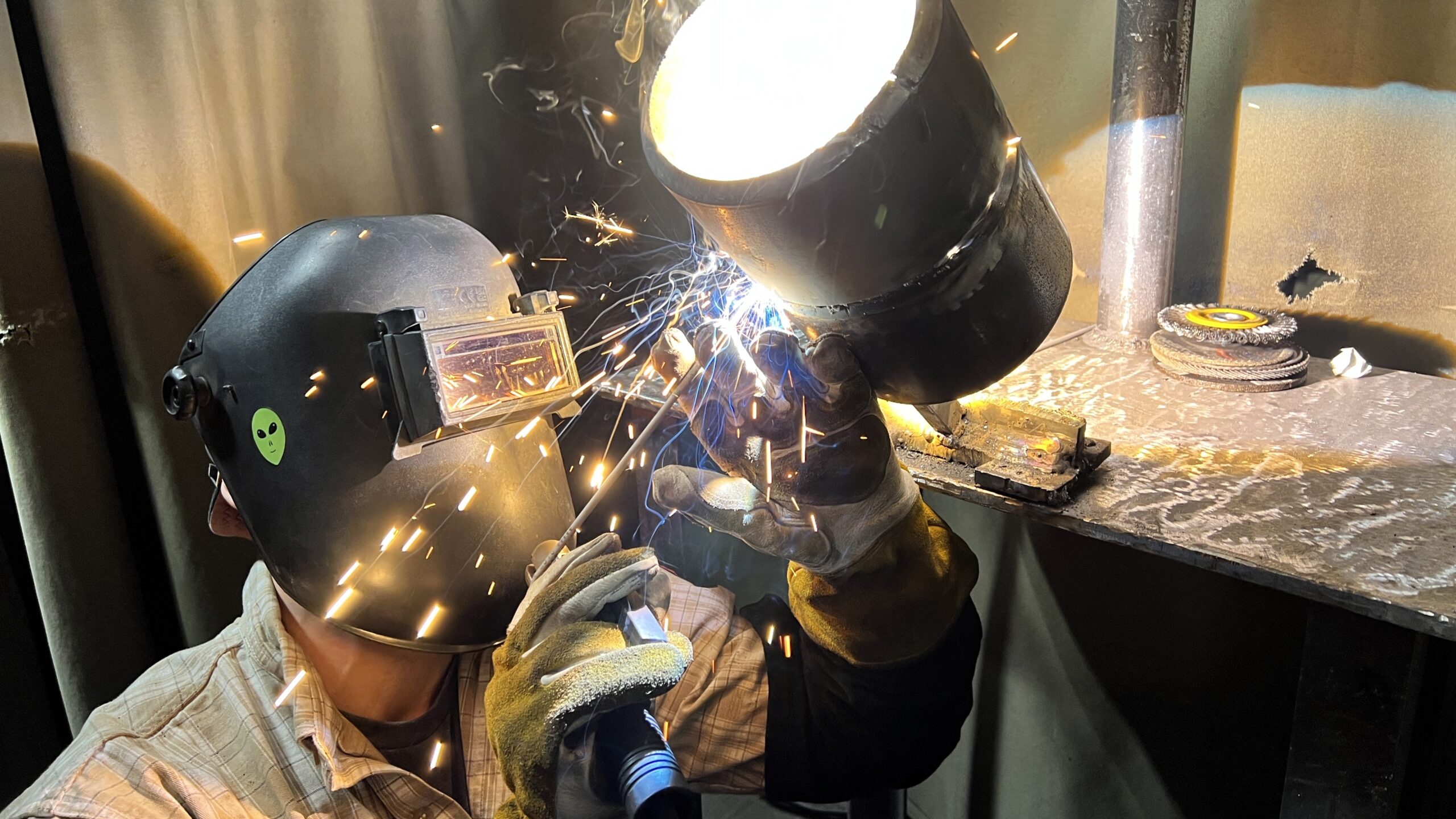Belgrade Fabrication’s proven methods for dealing with incomplete fusion
Usual Welding Repair Issues and How to Address Them Effectively
Welding repair work commonly encounter a series of problems that can jeopardize the honesty of the end product. Usual troubles include inadequate penetration, porosity, and misalignment, among others. Each defect offers unique obstacles that require particular approaches for resolution. Understanding these problems is important for welders intending to boost their skills and end results. This conversation will certainly check out these common welding repair problems and efficient approaches to address them.
Inadequate Penetration
Poor penetration occurs when the weld metal stops working to totally fuse with the base material, resulting in weak joints and possible structural failures. This concern typically comes from not enough heat input, incorrect electrode angle, or incorrect welding speed. Welders may come across inadequate penetration as a result of a mistake of the required criteria for a particular material density or kind. Additionally, contamination on the base material's surface area can impede reliable bonding, aggravating the trouble. To attend to inadequate infiltration, welders ought to guarantee proper settings on their tools and maintain a tidy work surface area. Normal examination of welds is suggested to determine any deficiencies early, permitting timely improvements and the avoidance of endangered structural honesty in welded settings up.
Porosity
Porosity is a typical issue in bonded joints that materializes as little gas bubbles caught within the weld steel. This issue can compromise the integrity of the weld, bring about minimized toughness and possible failing under anxiety. Montana Mobile Welding and Repair. Porosity generally develops from contamination, moisture, or inappropriate welding methods, which permit gases to escape into the molten weld pool. To address porosity, welders must guarantee correct surface prep work, maintain a tidy working atmosphere, and make use of suitable welding criteria. Additionally, choosing the appropriate filler product and securing gas can mitigate gas entrapment. Routine inspection and testing of welds can aid identify porosity early, assuring timely restorative activities are taken, thus maintaining the quality and dependability of the bonded structure
Imbalance
Imbalance in welding can emerge from different variables, consisting of improper arrangement and thermal development. Recognizing the source is necessary for reliable resolution. Numerous modification techniques are offered to straighten elements and guarantee structural honesty.
Sources of Imbalance
Welding misalignment frequently originates from a range of underlying problems that can jeopardize architectural stability. One key cause is incorrect fit-up of components prior to welding, which can cause voids and irregular surface areas. Variations in thermal expansion throughout the welding process can likewise lead to distortion, particularly if the products being signed up with have different coefficients of growth. Additionally, inadequate fixturing and clamping might fall short to hold parts safely in place, resulting in activity throughout welding. Poorly kept equipment, including welding makers and tools, may introduce incongruities in the weld bead, more contributing to misalignment. Operator error, stemming from not enough training or experience, can also play a significant function in producing misaligned welds.

Correction Techniques Offered
Resolving imbalance properly needs a mix of restorative methods tailored to the particular problems handy. One usual approach is making use of fixtures or jigs to hold parts in the appropriate setting throughout welding, ensuring consistent placement. Furthermore, preheating the materials can assist reduce distortion and improve fit-up. For significant imbalance, mechanical adjustment strategies, such as utilizing hydraulic jacks or clamps, can be utilized to correct the placement prior to welding. Post-weld heat treatment may additionally be needed to eliminate stresses brought on by misalignment. Lastly, mindful examination and adjustment throughout the setup phase can prevent misalignment concerns from becoming substantial troubles, promoting a smoother welding procedure and improving total structural honesty.
Distortion
Distortion is a typical obstacle in welding that can emerge from numerous factors, including unequal heating and cooling. Comprehending the reasons for distortion is important for implementing reliable avoidance strategies. Resolving this problem not just improves architectural stability however also enhances the total quality of the weld.
Reasons for Distortion
When subjected to the intense warmth of welding, products frequently undergo modifications that can lead to distortion. This sensation largely arises from thermal growth and contraction throughout the welding process. As the weld area heats up, the product expands; upon air conditioning, it contracts, which can develop internal stress and anxieties. Furthermore, irregular home heating throughout a workpiece can aggravate these stress and anxieties, causing bending or flexing. The sort of material additionally plays a considerable role; steels with differing thermal conductivity and coefficients of growth may react differently, leading to uncertain distortions. Moreover, inadequate joint style and poor fixturing can contribute to misalignment during welding, increasing the possibility of distortion. Understanding these causes is vital for reliable welding fixing and avoidance methods.
Prevention Techniques
Effective avoidance methods for distortion throughout welding concentrate on regulating warmth input and guaranteeing proper joint layout. Preserving a regular warm input assists to lessen thermal development and tightening, which can lead to distortion. Utilizing techniques such as preheating the work surface can also lower the temperature level gradient, promoting uniform home heating. Furthermore, choosing suitable joint layouts, such as T-joints or lap joints, can enhance stability and reduce stress and anxiety concentrations. Implementing appropriate fixturing to safeguard the workpieces in position better aids in maintaining positioning during the welding procedure. Ultimately, staggered welding series can disperse heat extra equally, protecting against local distortion. By applying these methods, welders can greatly reduce the likelihood of distortion and enhance the general high quality of their welds.
Splitting
Cracking is an usual problem encountered in welding repairs, typically arising from different variables such as incorrect air conditioning prices, product option, or inadequate joint prep work. The event of fractures can substantially compromise the stability of the weld, bring about possible failures throughout procedure. To address this problem, welders should initially examine the origin, ensuring that materials are compatible and properly chosen for the details application. Furthermore, regulating the air conditioning rate during the welding procedure is important; fast cooling can generate anxiety and cause fracturing. Correct joint layout and preparation also add to reducing the threat. Carrying out these techniques can improve weld quality and toughness, inevitably minimizing the likelihood of cracking in completed weldments.

Insufficient Fusion
A substantial issue in welding fixings is insufficient blend, which takes place when the weld metal does not properly bond with the base material or previous weld passes - Fabrication. This defect can lead to weaknesses in the joint, possibly compromising the stability of the welded structure. Variables contributing to insufficient blend consist of insufficient heat input, improper welding strategy, and contamination of the get more info surface areas being signed up with. To resolve this problem efficiently, welders should assure appropriate pre-weld cleaning and surface area preparation, in addition to readjust their welding parameters to achieve sufficient penetration and fusion. Routine assessment throughout the welding process can additionally help identify incomplete blend early, permitting for timely rehabilitative procedures to improve the general high quality of the weld
Overheating
While welding repairs can boost architectural integrity, overheating presents a considerable challenge that can bring about material deterioration. Extreme warm throughout welding can alter the mechanical buildings of steels, causing minimized strength, boosted brittleness, and bending. This phenomenon is particularly crucial in high-stress applications where structural reliability is paramount. Determining overheating can include aesthetic evaluations for discoloration or distortion, in addition to keeping track of temperature throughout the welding process. To reduce the dangers connected with overheating, welders should employ appropriate strategies, such as managing warmth input, changing traveling speed, and using suitable filler materials. Furthermore, implementing pre- and post-weld warm therapies can assist recover product residential or commercial properties and improve the general high quality of the repair, making certain long-lasting efficiency and safety and security.
Often Asked Concerns
What Are the Usual Signs of a Welding Flaw?

Exactly How Can I Check My Welds for Quality?
To evaluate welds for top quality, one can utilize visual examinations, ultrasonic screening, and radiographic techniques. Each technique guarantees architectural integrity, determines problems, and validates adherence to defined criteria, inevitably improving the integrity of the welded joints.
What Security Precautions Should I Take While Welding?
When welding, one ought to prioritize safety and security by putting on proper personal protective devices, ensuring appropriate ventilation, safeguarding flammable products away, preserving a clean work area, and being mindful of surroundings to avoid mishaps and injuries.
Can I Repair a Weld Without Renovating the Entire Joint?
Repairing a weld without redesigning the entire joint is feasible, relying on the damages (Welding). Strategies such as grinding, adding filler product, or using a welding process can successfully deal with particular flaws while preserving the bordering structure
What Devices Are Crucial for Reliable Welding Repairs?
Important tools for reliable welding fixings consist of a welding machine, wire brush, grinder, protective equipment, clamps, and filler products. Each tool plays a vital duty in guaranteeing high quality and safety throughout the repair procedure. Porosity commonly occurs from contamination, moisture, or incorrect welding techniques, which permit gases to run away into the liquified weld pool. Badly maintained tools, including welding devices and tools, might introduce variances in the weld grain, additional contributing to misalignment. When subjected to the intense heat of welding, products frequently undergo adjustments that can lead to distortion. Cracking is an usual issue experienced in welding repairs, typically resulting from various factors such as incorrect air conditioning rates, material selection, or poor joint preparation. A considerable problem in welding repair services is incomplete combination, which takes place when the weld steel does not adequately bond with the base product or previous weld passes.